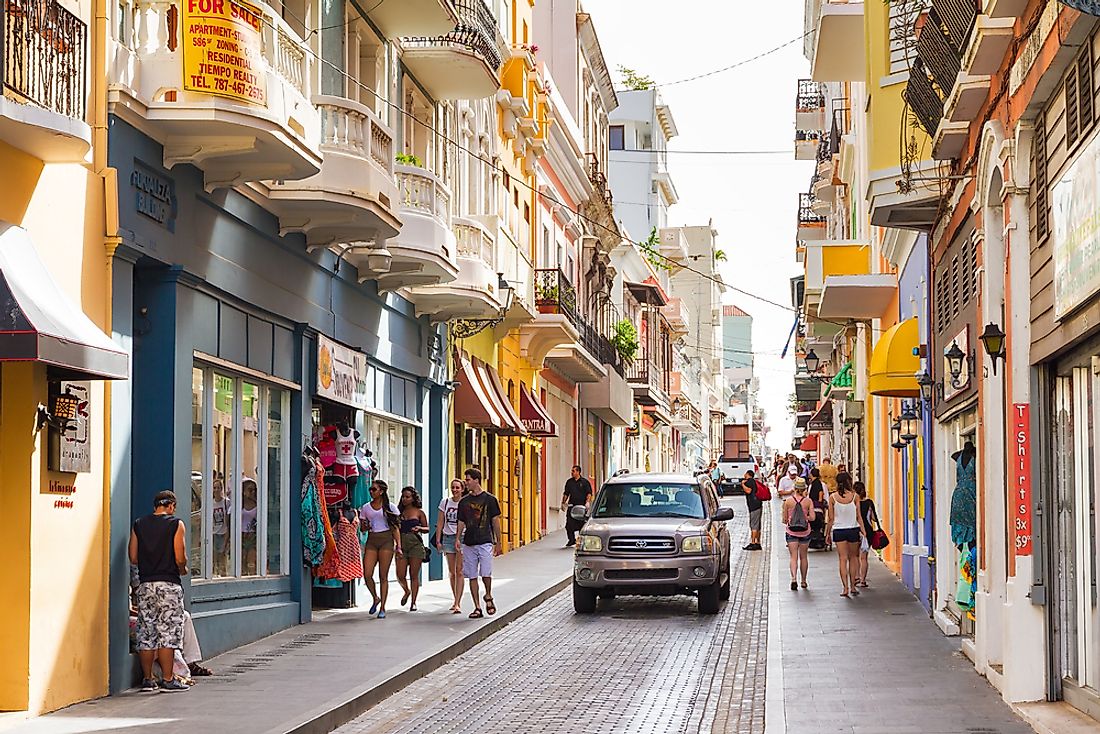The Ethnic Composition Of Puerto Rico

Data from the recent 2016 Census show that about 76% of Puerto Ricans are from the white ethnic group, translating to more than 2.82 million people. Puerto Ricans of African heritage makes up the second-largest ethnic group in Puerto Rico, accounting for 12.4% of the total population. Mixed race is the third-largest group, with over 122,000 people identifying themselves as of at least two races. The Mixed Race group is followed by the American Indian and Asian ethnic groups, who account for 0.5% and 0.2% of all Puerto Ricans respectively. Native Hawaiians are the smallest ethnic segment in Puerto Rico, as they are only 370 in total, equivalent to 0.1% of the total population. About 290,000 Puerto Ricans identify themselves as being from “other races,” equivalent to about 8% of the total population.
Original Ethnic Group: Taino
The original residents of Puerto Rico were known as Taino Indians who inhabited the islands for centuries. The ethnic group was the only ethnic group in Puerto Rico for hundreds of years, until the arrival of Europeans in the 16th century. A census conducted in 1765 showed that 49.6% of Puerto Rico inhabitants were of “other races,” which was the dominant ethnic group of the time. The arrival of the early Spanish settlers signaled the decline of the Taino, as they brought with them diseases against which Tainos had no defense, such as influenza, chicken pox, and measles. These diseases virtually wiped out the Tainos in Puerto Rico, leaving the white Spaniards to become Puerto Rico’s new dominant ethnic group.
African Slaves
The black ethnic group or Puerto Ricans of African ancestry originated either from slaves or freed slaves. Since its occupation of Puerto Rico, Spain had brought in African slaves to work in farms in the islands. By the 16th century, African slaves were trooping into the islands in their thousands. A 1791 slave revolt in neighboring Saint Domingue (modern-day Haiti) saw scores of French people settling in Puerto Rico, as they escaped from the turmoil that ensued.
Dominance Of The White Race
Puerto Rico would later become part of the United States, and as such, it was governed using American legislation. One such legislation was the controversial “Naturalization Act,” enacted in 1790 and signed into law by President Washington. The Act stipulated that only white immigrants were permitted to settle in the United States. According to the law, all people of white complexion, including Indians, Jews, and Arabs, were classified under the “white race.” During the period, the white race was dominant in Puerto Rico, with records from the 1830 census showing the race constituted 45% of Puerto Rico’s total population. The controversial act remained in force until 1870, when it was amended and allowed persons of African heritage to obtain American citizenship. Even then, the white race accounted for more than 50% of the population. Jews settled in Puerto Rico in large numbers in the early 20th century during the WWII, as they fled persecution in Nazi-Germany. Jews in Puerto Rico would record an influx in the 1950s as they escaped the Revolution in neighboring Cuba.











